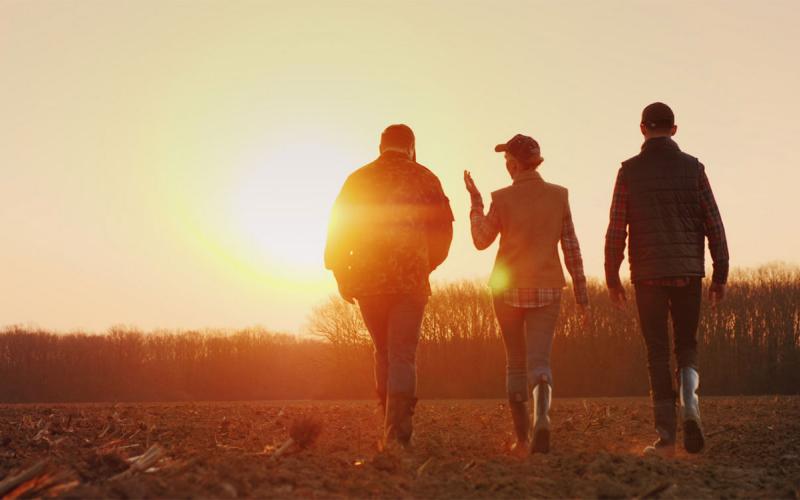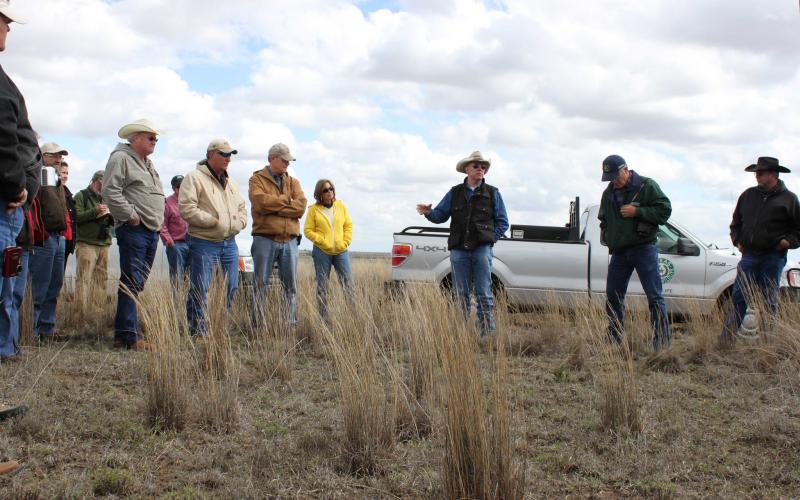
Written with contributions by Heidi Carroll, former SDSU Extension Livestock Stewardship Field Specialist & Beef Quality Assurance Coordinator.
Holidays are usually viewed as a joyous time. However, for some families, holidays can be stressful, as finances may be tight, family communication could be lacking or decreased daylight in winters may diminish mood and motivation. Changes in a swine caregiver’s mood, attitude, and behaviors can also begin to impact pigs in their care. Taking time to reflect involves slowing down and focusing on thoughts, feelings and behaviors. In the process, you may remember challenging times, including tough decisions you may have been forced to make about your swine operation. These reflections can help you critically evaluate strategies for the future and recall all the blessings that occurred. Each new day provides blank pages to fill with positive thoughts.
Both farmer welfare and animal welfare are important to the success and sustainability of the livestock industries. Research investigating dairy farmer welfare and animal welfare indicators showed connections between a farmer’s job satisfaction, overall personal welfare and stress level with an animal welfare index.1 Research of swine caregivers also reveals relationships between a person’s attitudinal and behavioral profile towards pigs with the levels of fear sows show towards humans, which can also negatively impact reproductive performance measures.2
Recognizing Stress
Knowing that stress impacts each person differently, it can be helpful to monitor your stress signs and symptoms. Where do you feel stress in your body? Do you experience physical signs, such as fatigue, headaches, aches and pains or digestive troubles? Maybe you have other stress signs that are emotional (moodiness, irritability, anger, loneliness, anxiousness, panic), cognitive (forgetful, pessimism, negative thinking, constant worrying) or behavioral (eating too much or too little, concerns with sleep, use of alcohol, drugs or cigarettes). Acknowledging and addressing these signs and symptoms is critical in maintaining a safe workplace for yourself and a good environment for your animals. Furthermore, handler behavior and attitude are shown to impact animal behavior (e.g. fear responses), production (e.g. growth and pigs born per sow, per year) and reproduction.3
It is important to recognize when you are stressed and determine the triggers that elevate your stress. Reflect upon all aspects of your job. Which parts of your job cause you stress? What stressors are you attempting to manage, and which ones can you control? When we worry about stressors outside of our control, our thoughts can become negative and feel difficult to overcome. Handlers should monitor negative attitudes, as sows especially are sensitive and may become more belligerent and difficult to move as handlers get frustrated. Swine caregivers responsible for euthanasia have a high-stress job. Continued research is shedding light on perceptions of euthanasia and its impacts on the person in the workplace and the need for euthanasia resources to address mental well-being, as euthanasia can be a moral stress.4,5
If stress is not managed, mental health can decline and become concerning. Producers experience high levels of psychological distress, depressive symptoms and anxiety symptoms.6 Of greater concern, suicide rates among those who work in agriculture are estimated to be 1.5 times higher than those who work in other occupations.7 Overall, chronic stress has taken a toll on farm and ranch families.
Managing Stress Effectively

As you think about the next six to 12 months, determine what you can control. For example, producers can be proactive and may feel more in control by creating and/or updating written emergency action plans and testing equipment for potential natural disasters (e.g. blizzards, floods) or facility issues (e.g. power outages). The positive thinking connected with being prepared contributes to optimism and can be a key aspect of effective stress management. Expecting the best in situations can be extremely challenging if you tend to be pessimistic and look and prepare for the worst. However, positive thinking has many health benefits, including lower rates of depression and psychological distress, improved physical health and better coping skills.
When you have been on a downward spiral of negative thoughts, the practice of positive thinking can seem daunting. Setting small goals is beneficial. Identify an area of your life in which you have negative thoughts and attempt to approach that area in a more positive way. Notice and monitor your thoughts related to that area. When negative thoughts sneak in, try to put a positive spin on the thought. Realize that market prices are out of your control, so stressing over them is fruitless. However, you could set a goal to proactively contract portions of your inputs (e.g. feed) and outputs (e.g. piglets, market hogs) or use risk management strategies to protect farm profits that will allow you to endure low market conditions.
Additional strategies to help manage your stress can include accepting your imperfections and forgiving yourself for hard days when you struggle with your emotions. When overwhelmed with feelings of stress, try not to lose sight of what is most important and respond to others with kindness – both co-workers and family.
Be kind to yourself. Certain times and situations may have been difficult; however, each day of your life is a new blank page to fill. The practice of positive thinking can improve your physical and mental health, and new perspectives and optimism can bring renewed strength to managing stress. Reflect on how daily animal care tasks are going on the farm and discuss ways to minimize stress or create efficiencies. How will you begin to fill those blank pages with positive thoughts?
Learn more about Farm Stress at SDSU Extension and the North Central Farm and Ranch Stress Assistance Center. Learn more about the steps to alleviating stress with this fact sheet, Five Steps to Alleviate Stress.
References
- Hansen, B.G. & O. Østerås (2019). Farmer welfare and animal welfare- Exploring the relationship between farmer’s occupational well-being and stress, farm expansion and animal welfare. Applied Animal Behaviour Science, 170, 104741.
- Hemsworth, P.H., J.L. Barnett, G.J. Coleman, & C. Hansen (1989). A study of the relationships between the attitudinal and behavioural profiles of stockpersons and the level of fear of humans and reproductive performance of commercial pigs. Applied Animal Behaviour Science, 23(4), 301-314.
- Hemsworth, P.H., G.J. Coleman, & J.L. Barnett (1994). Improving the attitude and behaviour of stockpersons towards pigs and the consequences on the behaviour and reproductive performance of commercial pigs. Applied Animal Behaviour Science, 39(3-4), 349-362.
- Simpson H, Edwards-Callaway LN, Cramer MC, Roman-Muniz IN, Stallones L, Thompson S, Ennis S, Kim E, Pairis-Garcia M. Preliminary Study Exploring Caretaker Perspectives of Euthanasia on Swine Operations. Animals (Basel), Dec 4;10(12):2296.
- Edwards-Callaway LN, Cramer MC, Roman-Muniz IN, Stallones L, Thompson S, Ennis S, Marsh J, Simpson H, Kim E, Calaba E, Pairis-Garcia M. Preliminary Exploration of Swine Veterinarian Perspectives of On-Farm Euthanasia. Animals (Basel), Oct 19;10(10):1919.
- Bjornestad, A., Cuthbertson, C., & Hendricks, J. (2021). An analysis of suicide risk factors among farmers in the Midwestern United States. International Journal of Environmental Research and Public Health, 18, 3563.
- Peterson, C., Sussell, A., Li, J; Schumacher, K., Yeoman, K., & Stone, D. M. (2020). Suicide rates by industry and occupation – National Violent Death Reporting System, 32 states, 2016. Morbidity and Mortality Weekly Report, 69(3), 57-62.


